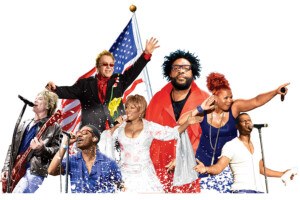Arrivederci, South Philly
"The kids are not as loyal to South Philly as they used to be," he says, looking a little sad. "We’ll see a change here. It’s already changing."
THE FIRST IMPEDIMENT to understanding South Philadelphia is the thought that it is neighborhood. It is actually the size of a small city; if it were to secede from Philadelphia today, it would rank in population between Knoxville, Tennessee (183,000) and Des Moines, Iowa (191,000).
As a small city, it is composed of neighborhoods and districts nearly as diverse as those found within the larger metropolis. There is a version of Chestnut Hill in graceful, leaf shaded Girard Estate, which once served as financier Stephen Girard’s summer plantation and where a single home recently sold for $135,000. It has midtown-type shopping from East Passyunk Avenue over to the five-and-dimes and street vendors on Broad Street. While Italians comprise the biggest single ethnic group, they make up less than half the total population, joined as they are by Irish, German and Eastern European settlers along the rivers, a large number of blacks, Puerto Ricans, a small colony of Portuguese, Middle Easterners (mainly Christians from Lebanon), remnants of a once-large Jewish settlement and a growing population of Southeast Asians. There are forsaken ghettos, newly gentrified enclaves of the non-South Philadelphia-born, and a vast working class and aspiring middle class. South Philadelphia is also more than a labyrinth of row houses with an outdoor market. There are ports, oil refineries, factories, a new enclosed mall, 330-acre F.D.R. Park with its lake, stone boathouse and golf course, 102 houses of various religions, 4 police districts, 55 schools, 5 public-housing projects and 23 funeral homes-most, for some reason, to be found along a 10 Block stretch of Broad Street.
The second impediment to understanding is the thought that South Philadelphia is a forever thing. From its start-from the city’s start-it has been a place where new Americans could land, get their bearings, learn the ropes and move from. It is testimony to the briefness of memory – -or the endurance of romantic notions-that so many people, those who live here as well as outsiders, speak of this place as a kind of legacy to be handed from one generation to the next. Of course, it is a legacy; children still grow up and settle down next door to parents, giving neighborhoods that protected, insular flavor. But it’s hardly a long tradition. Immigrants who came here moved from peasant villages on the other side of the world, a voyage toward economic betterment that makes job hunting in Houston look timid in comparison. Many of their children, perhaps most, clung to home and gave life to the legend. Their grandchildren, now in their 20s and 30s and 40s, do not cling quite so closely.
The tradition at its strongest, it turns out, was exactly one generation long.
No one knows what South Philadelphia will become, although the fact that it is changing is undeniable. The most recent census reports that the area had almost 44,000 fewer residents in 1980 than in 1970. A drop of nearly one-fifth, greater than the city-wide loss (13%) and second in severity only to lower North Philadelphia. The loss wasn’t confined to any single part, either; all but one of the 50 downtown census tracts experienced drops (even in Lou and Alison’s supposedly staunch neighborhood there was a 14% drop). During that same period, public-school enrollment fell by nearly 20%, and Catholic-school enrollment dropped by nearly twice as much. One hospital discontinued its maternity and pediatric services; at another, the birthrate fell by half.


